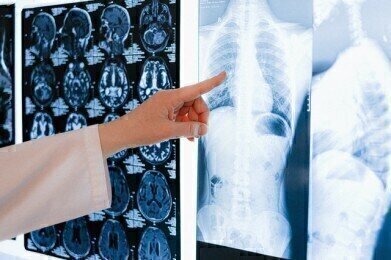Mass Spectrometry & Spectroscopy
When Was NMR First Used?
Oct 18 2021
Nuclear magnetic resonance (NMR) is one of the most useful analytical techniques employed by modern chemists. Using state-of-the-art instruments to observe electromagnetic radiation absorbed and emitted by atomic nuclei, researchers can map the chemical, structural and biological properties of a sample at the molecular level.
The evolution of nuclear magnetic resonance
Today, NMR is a mainstay in laboratories, research facilities and medical institutes around the world. However, the field taken several decades to evolve to its current state. Read on to find out more about the origins of nuclear magnetic resonance, when the technique was first used and what’s next for the field.
Measuring NMR in the Big Apple
Isidor Rabi, an American physicist who helped develop the atomic bomb in WWII, is credited for the discovery of nuclear magnetic resonance. In 1944 he was awarded the Nobel Prize in Physics "for his resonance method for recording the magnetic properties of atomic nuclei." Much of his career was spent at Columbia University in New York, where he worked on using molecular beams to record and measure nuclear magnetic resonance.
Taking NMR to the next level
Several years later, American physicist Edward Mills Purcell and his Swiss-born colleague Felix Bloch made a breakthrough in NMR. In 1946, the pair built on the technique pioneered by Rabi and successfully used NMR to analyse liquid and solid matter. They received the 1952 Nobel Prize in Physics for their efforts, with the Royal Swedish Academy of Sciences applauding them “for their development of new methods for nuclear magnetic precision measurements and discoveries in connection therewith.”
The first NMR patents
In the 1950s the first US patent for a specialised NMR machine was made. It was lodged by American inventor Russell H. Varian, who went on to launch a prototype instrument called the NMR HR-30. While the instrument was cutting edge at the time, it wasn’t until the 1990s that independent businesses, research centres and universities were able to purchase commercial NMR instruments.
The arrival of magnetic resonance imaging
In 2003, physicists Peter Mansfield and Paul Lauterbur shared the Nobel Prize in Physiology or Medicine "for their discoveries concerning magnetic resonance imaging." The pair were early pioneers of MRI techniques, with the first successful studies carried out in the late 1970s. Today, magnetic resonance imaging is one of the most valuable diagnostic techniques available to medical professionals, with scanners relying on powerful magnetic fields and radio waves to generate detailed images of internal organs.
NMR instruments have come a long way since the first single nucleus models were launched in the 1950s. Find out more about the latest benchtop NMR instruments, including the compact yet powerful multinuclear X-Pulse spectrometer in ‘X-Nuclei NMR Spectroscopy’.
Digital Edition
Lab Asia 31.2 April 2024
April 2024
In This Edition Chromatography Articles - Approaches to troubleshooting an SPE method for the analysis of oligonucleotides (pt i) - High-precision liquid flow processes demand full fluidic c...
View all digital editions
Events
Apr 28 2024 Montreal, Quebec, Canada
May 05 2024 Seville, Spain
InformEx Zone at CPhl North America
May 07 2024 Pennsylvania, PA, USA
May 14 2024 Oklahoma City, OK, USA
May 15 2024 Birmingham, UK


















